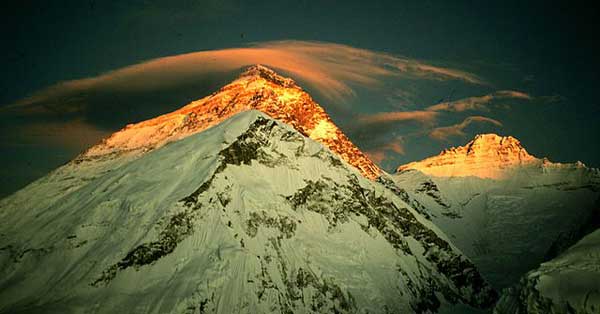
During my brief career as a kindergarten teacher, back in 1967, my co-teacher and I arrived every morning about a half hour before the children. This was in Ann Arbor, Michigan. Our first act was to dump out two identical wooden puzzles of the United States. Each piece was a state. Then the two of us would race to see who could assemble the country first. This was fun. And it’s easy, especially after you memorize that Nebraska is north of Kansas. A puzzle of the world’s countries (about 196, depending on who you talk to) would require considerably more wits. But naming the continents, Earth’s six great land masses—Africa, Antarctica, Australia, Eurasia, North America, and South America—that’s no challenge at all.
But continents move, and the lay of the land today shape-shifted out of the lay of the land that used to be. What did it used to be? And when was that? Consider the four eons.
Earth formed (along with the rest of the solar system) 4.6 billion years ago, and so began the Hadean Eon. Hadean means Hades, hot as hell. During those hot times, our planet accreted from whirling asteroids and planetesimals. The heavy element iron sank to the core, after which a Mars-sized object collided with Earth. The collision ejected debris that later coalesced to form the moon. (This moon-making event occurred 4.5 billion years ago, according to Doug MacDougall’s Why Geology Matters.) Volcanoes spewed gases—mostly carbon dioxide and water vapor—to make Earth’s first atmosphere. The place cooled, water vapor turned to rain, the ocean filled. Picture the late Hadean Eon: a worldwide sea, cratered tops of volcanoes poking up lifeless under dense mists and fogs, a nearer moon, a dimmer sun.
The second eon, the Archean, began 3.8 billion years ago. Marine life began, possibly earlier, certainly by then.
At some point, plate tectonics began. Earth has three layers: core, mantle, crust. The hot core is ever cooling, ever giving off heat to the mantle. The cooking but cooling core sets off convection currents in the mantle, hot rocks rising, cool rocks sinking. The top part of the mantle (made of rigid rock) fused with the crust is called the lithosphere. Convection currents move the lithosphere, which floats as separate plates. Plates accrete at ocean trenches where molten rock (magma) spews out from the mantle. At subduction zones, the plates subduct—they slide under an adjoining plate—the edge returning to the mantle.
Plate tectonics conducts Earth’s music in a slow rhythm of continents merging to form supercontinents, and supercontinents breaking up to form continents. Continents ride on plates, but when two continents crush together, they are too light to subduct. They make mountains. So plate tectonics gives us the lay of the land.
The first supercontinent (hypothetically) formed in the late Archean three billion years ago. It has been dubbed Ur. Evidence for Ur is found in widely scattered cratons (ancient, stable pieces of continental lithosphere) with similar or identical qualities. Cratons that likely formed pieces of Ur have been identified in Africa, India, Australia, and East Antarctica. (See Continents and Supercontinents by John J. W. Rogers and M. Santosh.)
The third eon, the Proterozoic, began 2.5 billion years ago and lasted for two billion years. That’s a long time, and during those millennia four supercontinents formed and broke up: Arctica and later Atlantica (both named for the oceans that opened through them), Columbia (named for ancient rocks found in the Columbia River Basin in Washington state), and Rodinia, which formed about 1.8 billion years ago and later broke up.
Now we come to our own eon. The Phanerozoic began along with the Cambrian period known for the explosion of life forms. That was 542 million years ago.
The plates kept moving. At the beginning of the Phanerozoic, the supercontinent Gondwana formed at the bottom of the earth. Three smaller continents—Laurentia, Siberia, and Baltica—seem almost to be cradled in Gondwana’s southern earth-embracing arms. Everything else was ocean. The land inched north until we had a large northern continent, Laurentia, and a large southern continent, Gondwana. This was 350 million years ago, a time that included the Carboniferous period. Pennsylvania coal formed out of warm bogs replete with tree ferns and dragonflies, in Laurentia, long before North America came into existence.
Gondwana and Laurentia met to form Pangaea, our most recent supercontinent. The huge land mass stretched from the South Pole to the North Pole. It lasted from 251 million to 199 million years ago. Pangea began breaking up and by 100 million years ago our own familiar continents were taking shape. We Homo sapiens came on the scene about 200,000 years ago.
The lithosphere divides into about 15 main plates and many smaller ones, some debated. If you live in California, you live where the Pacific plate scrapes along the North American plate, moving north. If you live in Washington, D.C., you live far from the boundary of the North American plate, which terminates in the middle of the Atlantic. I live on the western edge of the North American plate (in Seattle). The small oceanic Juan de Fuca plate dives under us. It has been locked in place for centuries. The earthquake that will bring Seattle down when the Juan de Fuca plate comes unstuck has become legendary before it even happens. We call it The Big One.
The lay of the land is a work in progress. What next? India is plowing into Asia, still pushing up the Himalayas. The Atlantic is getting wider. The North American plate is inching westward and the Eurasian plate is inching eastward. Our new map, the supercontinent of the future, will be drawn in about 100 million years. It already has a name: Amasia.

